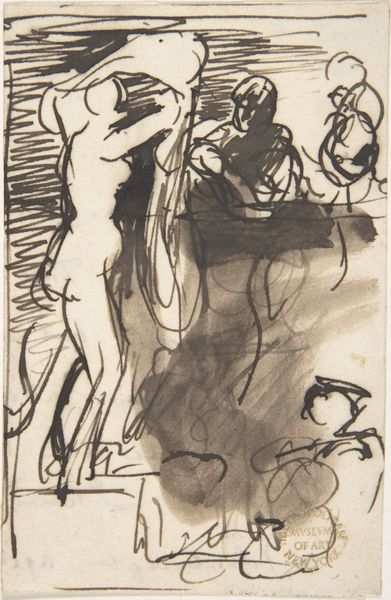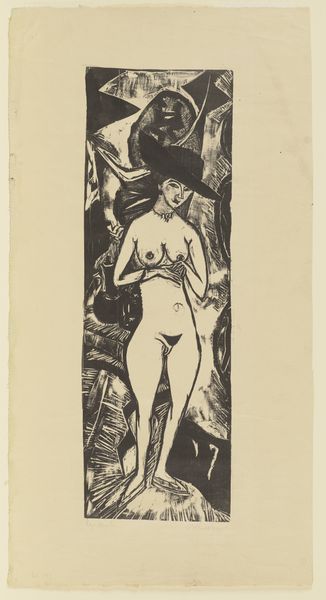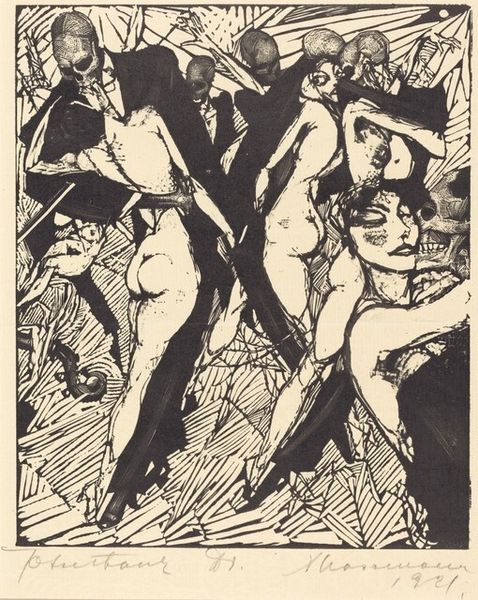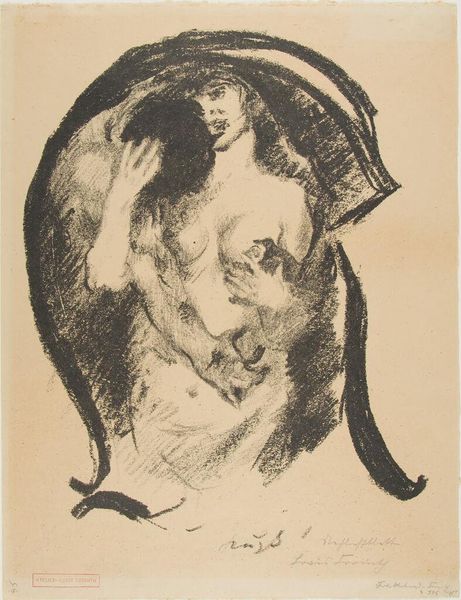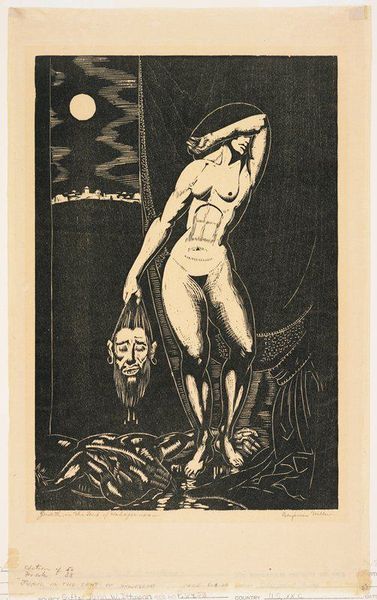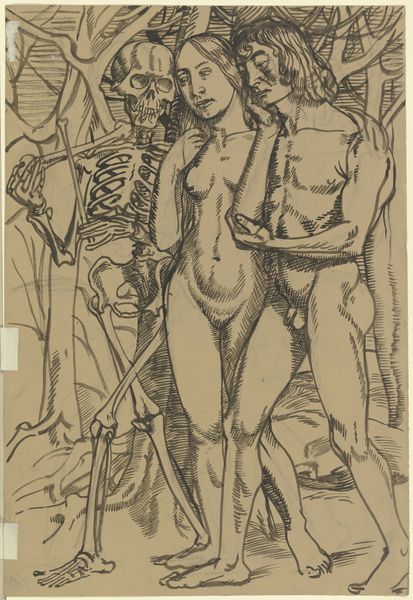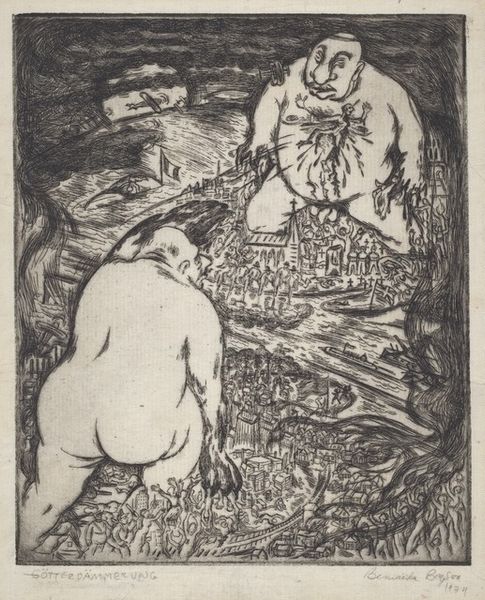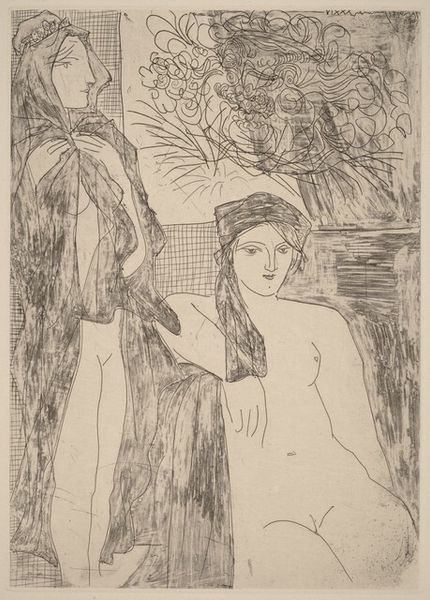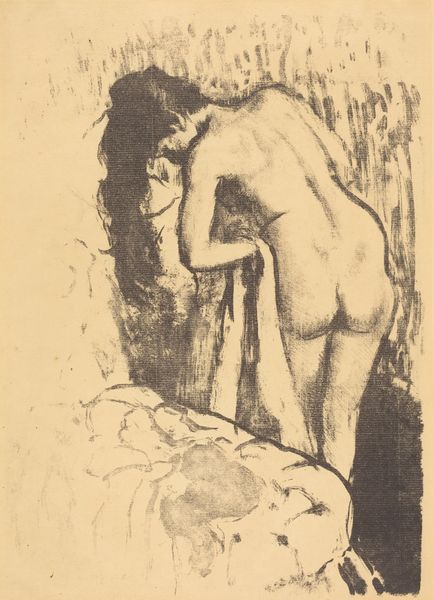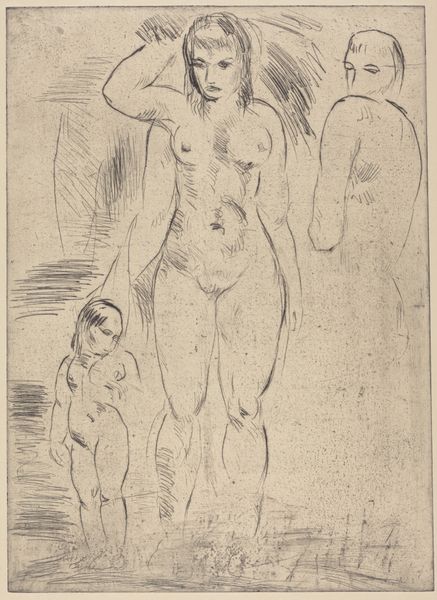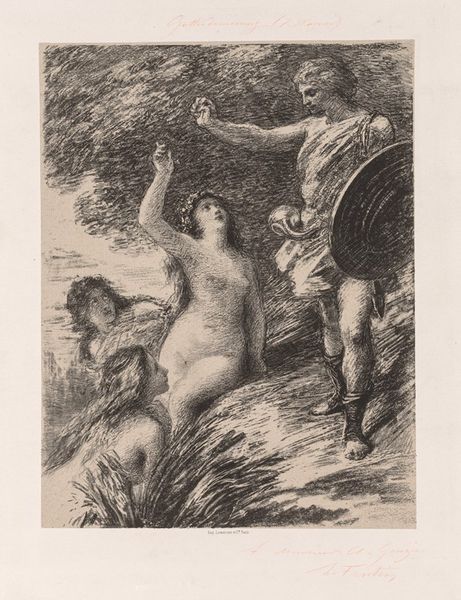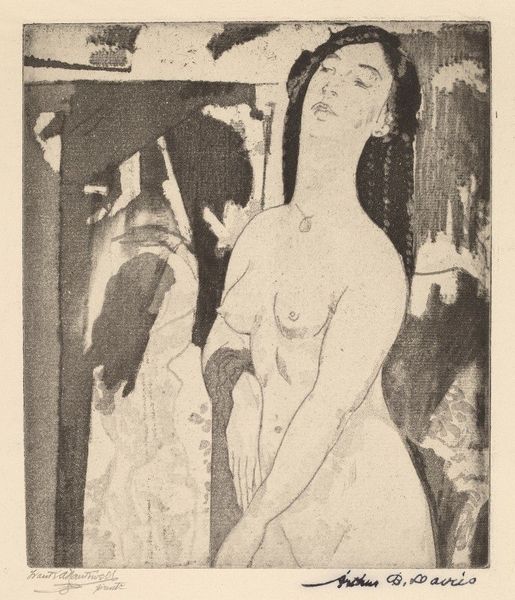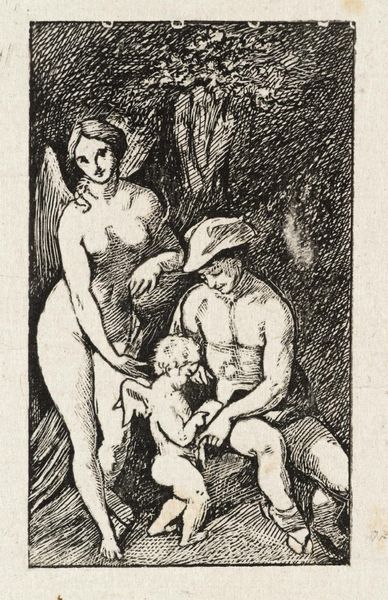
drawing, ink
#
portrait
#
drawing
#
ink drawing
#
pen sketch
#
pencil sketch
#
german-expressionism
#
figuration
#
ink
#
expressionism
#
nude
Copyright: Public Domain: Artvee
Curator: The raw, almost unsettling energy emanating from this piece immediately grabs you, doesn't it? Editor: Absolutely. Ernst Ludwig Kirchner's "Der Besuch der Freundin," created in 1912, feels incredibly charged. The visible mark-making and tonal variation is palpable; I want to explore its creation. It is rendered in ink, which, I believe, allowed for a level of immediacy and fluidity. The penstrokes feel frantic, urgent almost. What sort of cultural factors were driving its creation? Curator: German Expressionism as a movement prioritized the subjective experience above all else. "Die Brucke", the artists' group co-founded by Kirchner, aggressively overturned convention. Think about the rise of the industrial city and shifting social dynamics. Mass media shaped reality. There was great potential for income and leisure, but that was accompanied by equally significant feelings of isolation. Editor: The use of ink aligns perfectly with Expressionism’s emphasis on the artist's hand and emotional authenticity, while its creation reflects the influence of African and Oceanic art forms; in many cultures these artforms have direct relation to the natural elements of where those resources come from, while speaking truth and holding significance for entire communities. We have to address questions of appropriation of that historical connection. Is the ink bought commercially, sourced sustainably, or derived from unique places? Those aspects dictate the role and significance of that very materiality to our artist. Curator: That connection to global forces feels very palpable here! Kirchner was a voracious consumer of global cultures. In his lifetime, photography became easily accessible, shaping artistic styles through new compositional approaches to portraying the world in real-time. You notice that these forms embrace this fragmentation. Editor: I find myself lingering on the two women depicted. The juxtaposition between the fully clothed figure in what appears to be modern attire next to the unclothed figure is so dynamic. Curator: What a way to illustrate shifting expectations around modernity, and sexuality in public life. As art became something handled more casually by bourgeois society and art dealers, it became something to be consumed and sold by these communities, shaping its course. Editor: To summarize, looking at Kirchner’s method emphasizes process and commodification within modern culture. It offers a sharp commentary, especially when we analyze the history surrounding its exhibition and circulation. Curator: Absolutely, this is a key piece to unraveling this period.
Comments
No comments
Be the first to comment and join the conversation on the ultimate creative platform.
